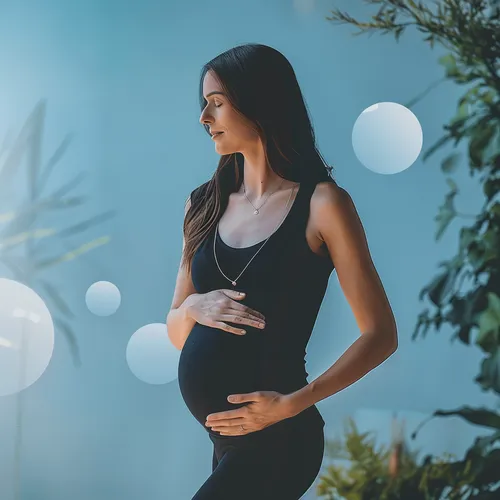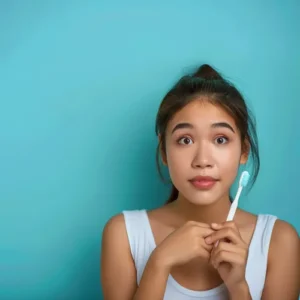What Is Ovulation Exactly and How Does It Work?
Read our easy to follow guide…
Your ovaries are located on either side of your uterus (womb), near your Fallopian tubes, and are each about the size of an almond. They have two functions: to produce eggs (ova), and also to produce the hormones oestrogen and progesterone, which are responsible for your menstrual cycle and female body characteristics.
You are born with about 2,000,000 eggs in your ovaries. During each menstrual cycle, between 10 and 100 eggs begin to ripen, but usually only one will reach maturity on the day of ovulation and be ready for fertilisation to take place.
This egg becomes surrounded by ovarian cells until it forms a follicle, about the size of a grape, on the surface of the ovary. It then ruptures and is drawn into the Fallopian tube by frond-like fibres called fimbriae. The egg can live for 24 to 48 hours.
Your oestrogen levels rise until the middle of your cycle, then fall away for a short period as your body makes an increasing amount of progesterone, which in its turn thickens the lining of your uterus so that a three or four-day-old embryo would be able to burrow into it.
When Does It Happen?
Ovulation usually occurs 14 days before your next period is due. So, if you are one of the 12% of women who have a 28-day cycle (women’s cycles vary from 15 to 50 days), you’ll ovulate on day 14. Fertilisation of an egg usually occurs 12 to 24 hours after ovulation, and sperm can live for 72 hours in your vagina.
Remember that, even though you conceive on day 14 of your cycle, your pregnancy will always be calculated from the first day of your last period (so the moment you conceive, you’re already two weeks pregnant!)
Narrowing It Down
Increase your chances by finding out exactly when you’re ovulating:
Ovulation Test Kits
Home ovulation kits detect detect the surge in luteinizing hormone (LH) that occurs 24-36 hours before ovulation. They work similar to pregnancy tests – you urinate on a test strip and wait for a color change to indicate a positive LH surge. The best time to use an ovulation test kit is around the time you expect to ovulate based on your typical cycle length. A positive result pinpoints your 2-3 most fertile days to try to conceive. Some kits come with multiple test strips to use over several days.
Electronic Ovulation Predictor
An electronic ovulation predictor or fertility monitor is a more advanced option. It detects not just LH but also monitors estrogen levels in your urine. By tracking both hormones, it can identify more accurately when you enter your fertile window before ovulation. Most fertility monitors will indicate “low”, “high” and “peak” fertility readings, pinpointing up to 6 fertile days per cycle. While more expensive than basic ovulation tests, they provide a wider fertility window and take some guesswork out of pinpointing ovulation.
The Rhythm Method
The rhythm or calendar method is a natural way to predict ovulation by tracking your menstrual cycle lengths over time. After charting cycles for several months, you calculate the fertile window based on your shortest and longest cycles. Subtract 20 days from your shortest cycle to estimate the first fertile day, and subtract 11 days from your longest cycle for the last predicted fertile day. This gives you a fertile period of roughly 14-16 days when you’re most likely to ovulate. The downside is it requires months of data and regular cycles to be effective. It also doesn’t detect the actual ovulation day.
Signs of Ovulation
Your body gives you several clues when you’re ovulating. Recognizing these signs can help you pinpoint your most fertile days each cycle. Some common ovulation symptoms include:
- Cervical Mucus Changes: Around ovulation, you may notice an increase in clear, stretchy, egg-white cervical mucus. This fertile mucus helps sperm travel more easily to the egg.
- Basal Body Temperature Rise: Your basal body temperature (BBT) dips slightly just before ovulation, then rises after you ovulate. Tracking your BBT can identify your most fertile period.
- Breast Tenderness: Many women experience sore, tender breasts in the days leading up to ovulation due to hormonal changes.
- Ovulation Pain: About 20% of women feel a mild ache or pain in their lower abdomen when ovulating, often on one side. This “Mittelschmerz” lasts briefly.
- Increased Sex Drive: Rising oestrogen levels can make some women feel more frisky around ovulation time.
- Light Spotting: A small percentage notice light spotting when ovulating as the follicle ruptures.
Not everyone experiences ovulation symptoms, so paying attention to your personal patterns is key. Consider using ovulation tests or an app to help predict your fertile window.
Boosting Fertility
Besides having sex in your fertile days, there are other lifestyle habits that may improve your chances of conceiving:
- Maintain a Healthy Weight: Being overweight or underweight can disrupt ovulation. Aim for a BMI between 20-25.
- Manage Stress: Chronic stress hampers fertility by affecting hormone production. Try relaxation techniques like yoga or meditation.
- Exercise Moderately: Getting regular, moderate exercise like brisk walking improves fertility in both men and women.
- Limit Alcohol and Caffeine: Excessive amounts of either can contribute to ovulation problems. Moderation is advisable when trying to conceive.
- Take Prenatal Vitamins: Getting adequate folic acid, iron, zinc and other key nutrients optimises reproductive health.
Photo credit; “Pregnant” by Anthony Cunningham for Zoom Baby
Zoom Baby is a leading supplier of Pregnancy Tests and Ovulation Test Kits





